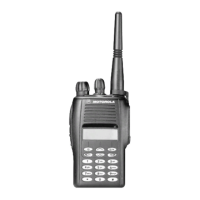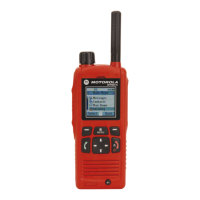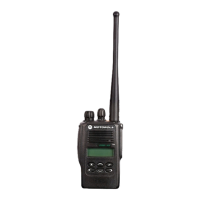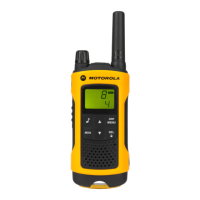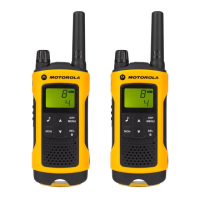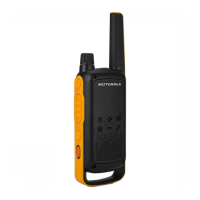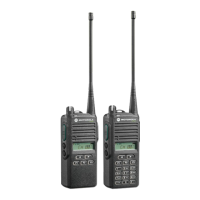4-2 Test Mode
4.3 Test Mode
4.3.1 RF Test Mode
When the radio is operating in its normal environment, the radio’s microcontroller controls the RF
channel selection, transmitter key-up, and receiver muting. However, when the unit is on the bench for
testing, alignment or repair, it is removed from its normal environment. It cannot receive commands
from its system and, therefore, the internal microcontroller will not key the transmitter nor unmute the
receiver. This prevents the use of normal tune-up procedures. To solve this problem, a special routine
called TEST MODE or “air test,” has been incorporated in the radio.
To enter Test Mode:
1. Turn the radio on.
2. Within 10 seconds after the self test is complete, press side button 2, (SB2) five times in
succession.
3. Press SB2 again to scroll through to the next channel spacing and so on. You will also hear a
corresponding set of tones.
4. Press SB1 to scroll through and access test environments as shown in Table 4-2 below.
5. Press SB2 for 3 seconds in the Control Head Test mode to return to RF Test mode.
NOTE
To access all 14 test modes on a 4-channel radio, the frequency knob and mechanical stop
sleeve must be removed (see Exploded View diagrams in section 3.11 beginning on page 3-
20).
XX - channel number (01 - 14)
Table 4-2 Test Environments
No. of
Beeps
Description Function
1 Carrier Squelch RX: if carrier detected
TX: mic audio
1 Tone
Private-Line
RX: unsquelch if carrier and tone (192.8Hz) detected
TX: mic audio + tone (192.8Hz)
2 Digital
Private-Line
RX: unsquelch if carrier and digital code (131) detected
TX: mic audio + digital code (131)
3 Dual-Tone
multiple
frequency
RX: unsquelch if carrier detected
TX: selected DTMF tone pair
9 MDC1200 HSS RX: unsquelch if carrier detected
TX: 1500Hz tone
5 Unsquelch Open RX: constant unsquelch
TX: mic audio
11 CMP RX: if carrier detected
TX: mic audio
12 LLE RX: if carrier detected
TX: mic audio
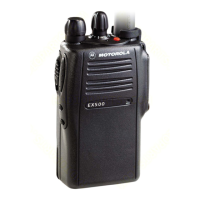
